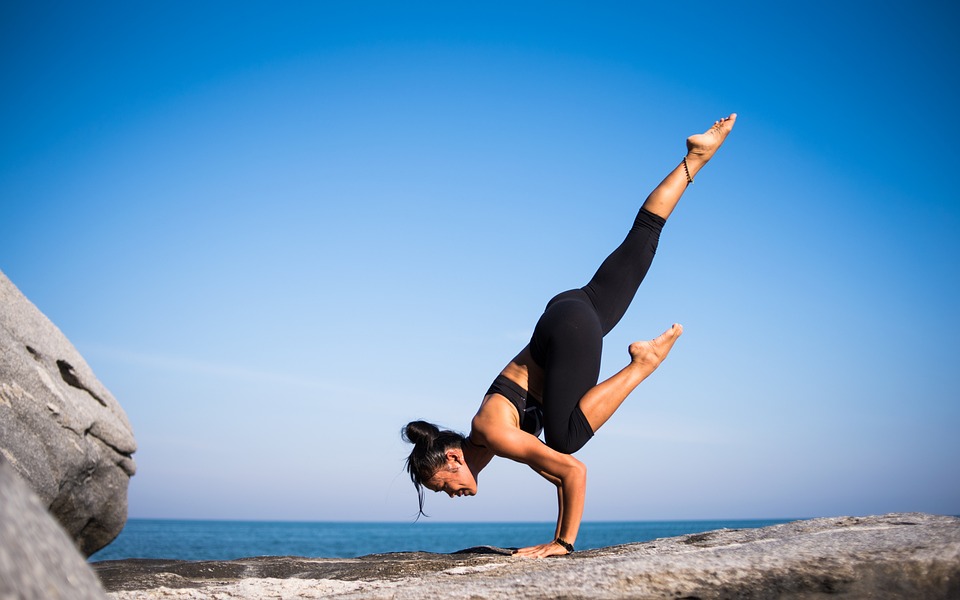
You can transform stress into serenity using three powerful visualization exercises. Start with guided imagery, where you create calming mental scenes to regulate emotions and reduce cortisol levels. Next, try creative visualization by setting a quiet environment, engaging your senses, and imagining positive outcomes. This strengthens neural pathways and builds stress resilience. Finally, combine mindful breathing with visualization to absorb calmness and release tension. Deep breaths calm your system, enhancing your mind-body connection. Each exercise offers immediate relief and long-term benefits. Discover how these techniques can shift your stress into tranquility as you explore these methods further.
Guided Imagery Practice
Everyone can benefit from guided imagery practice to relieve stress and anxiety. Imagine harnessing the power of mental imagery as one of the most effective relaxation techniques available. This practice invites you into a domain of serene environments, crafted entirely by your imagination. It’s portable—you don’t need anything more than your mind and a bit of focus. By weaving all your senses together, you create a mental image that immerses you completely. This immersive experience helps you escape the chaos around you, offering a pleasant distraction from your stressors. Research indicates that guided imagery significantly reduces cortisol levels, enhancing emotional regulation and mental clarity. Regular practice of guided imagery can contribute to long-term stress management, much like the benefits offered by physical exercise. When you engage deeply, you’re tapping into the profound mind-body connection that influences your physical state, calming your emotions, reducing your heart rate, and lowering blood pressure.
Preparing for guided imagery is simple. Find a quiet space, settle comfortably, and close your eyes. Visualize a peaceful place, letting your senses build the rest of the experience.
With regular practice, your brain will naturally pull you into this tranquil state, making guided imagery a powerful tool for managing stress and enhancing emotional well-being. Accessible through audio programs or therapists, these techniques are adaptable to any lifestyle, equipping you with autonomy and peace.
Creative Visualization Technique
Creative Visualization Technique
Guided imagery offers a peaceful retreat through mental landscapes, and now, you can expand this practice with the creative visualization technique for targeted stress relief.
Start by setting up your environment. Find a quiet spot where mental imagery can flourish without interruption. Sit comfortably, close your eyes, and take deep breaths to anchor yourself, paving the way for effective stress reduction. Visualization strengthens brain connections through mental exercise, forming neural pathways that improve stress resilience and overall mental health. Engaging in creative activities, such as visualization or coloring intricate patterns, has been shown to significantly reduce stress and foster emotional release.
In crafting your visualization, imagine a positive resolution to a challenging situation in vivid detail. Use all five senses to construct your scene—what do you see, hear, feel, smell, and taste? Let colors, textures, and emotions paint the scene. Visualize tangible objects and incorporate achievable goals, grounding your mental imagery in reality.
Enhance your experience by delving into sensory details. Consider the soothing light of dawn, the vivid hues of your surroundings, or the grounding textures beneath you. Imagine the supportive presence of loved ones or comforting animals. Engage with your imagination, exploring the emotions that surface within this sanctuary.
To make a habit of creative visualization, set a daily routine. Use affirmations to maintain focus, releasing skepticism.
This practice, merged with mindful relaxation, will transform stress management into a path of liberation.
Breathing With Visualization

Explore a powerful method for stress relief with breathing and visualization exercises. By combining mindful breathing with sensory awareness, you engage both physical and mental relaxation to effectively reduce stress. Deep breathing calms your nervous system, setting the stage for tranquility. As you inhale deeply, imagine absorbing calmness and peace; exhale, and visualize stress leaving your body.
To begin, find a peaceful place where you can comfortably sit without distractions. Start with deep breaths and focus on the rhythm of your breathing to soothe your body. Engage your senses by envisioning serene images that resonate with tranquility, perhaps the sound of gentle waves or the warmth of sunlight on your skin. Let each sensory detail enrich your experience, anchoring your mind in relaxation. Consistency and personalization are key in finding the relaxation techniques that best suit your lifestyle and needs. Consistent practices like goals visualization have been shown to enhance mindfulness and self-efficacy, supporting a deeper connection with one’s aspirations and promoting positive emotions during physical activities.
Consistency is vital for enhancing this practice’s effectiveness. Regular sessions not only bring immediate relief from anxiety and tension but also promote long-term benefits such as improved emotional regulation and a heightened sense of well-being.
With practice, breathing with visualization strengthens the mind-body connection, providing a versatile tool to help you divert from stressors anytime, anywhere. Embrace this empowering technique, and find liberation from the chains of everyday stress.
Guided Imagery Offers Serenity
Guided imagery emerges as a powerful tool for stress relief, offering a portal to tranquility through the conscious use of mental visualization. This practice taps into the profound connection between the mind and body, redirecting attention away from stressors toward a serene mental landscape. By engaging the senses in the creation of vivid mental images, guided imagery fosters relaxation and aids in alleviating stress, anxiety, pain, and even symptoms of depression. It is commonly used in therapeutic settings for pain management and anxiety reduction, proving effective in various populations, including cancer patients. Its effectiveness isn’t only backed by scientific evidence but also by its accessibility, making it an invaluable resource for individuals, whether dealing with daily stressors, chronic health conditions, or pre-surgical anxiety. As stressed individuals engage in guided imagery, they can enhance flexibility in their thoughts and emotions, promoting a more adaptive response to the challenges they face. As we’ve explored in this article, guided imagery not only provides immediate relief but also promotes long-term mental and physical health benefits. Through consistent practice, individuals cultivate a better sense of control and resilience, learning to navigate life’s challenges with a calm and focused mindset. Its application extends beyond stress reduction to improving sleep quality, managing pain, and even enhancing athletic performance. The portability and ease of this technique make it a practical choice, encouraging regular practice wherever one might find themselves. Ultimately, guided imagery invites practitioners into a domain of serene self-exploration, revealing the potential to transform their emotional and physical well-being through the simple yet profound power of imagination.













